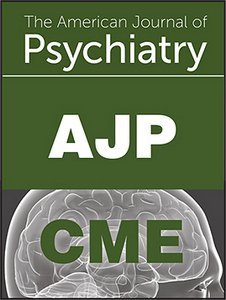Treating Depression With Repetitive Transcranial Magnetic Stimulation: A Clinician's Guide.
IF 14.7
1区 医学
Q1 PSYCHIATRY
引用次数: 0
Abstract
Transcranial magnetic stimulation (TMS) applies electromagnetic pulses to stimulate cortical neurons. The antidepressant effect of the repetitive application of TMS (rTMS) was first shown nearly three decades ago. The therapeutic potential of TMS has been extensively investigated, mostly in treatment-resistant depression (TRD). Studies have extensively evaluated stimulation parameters, treatment schedules, methods to localize the stimulation target, and different magnetic coil designs engineered for desired stimulation breadth and depth. Several of these stimulation protocols and coils/devices have received U.S. Food and Drug Administration (FDA) clearance for application in TRD and other neuropsychiatric disorders, such as obsessive-compulsive disorder. Some stimulation protocols, while not FDA-cleared, have substantial clinical trial-derived evidence to support their safety and antidepressant efficacy. The proliferation of rTMS translational and clinical research has resulted in the field's advancement. This clinician-oriented review contains an overview of fundamental TMS principles, physiological effects, and studies of rTMS in TRD. Also discussed are two innovations that are increasingly applied in the clinic: theta burst stimulation and accelerated scheduling. A synthesis of the key clinical considerations given to patient assessment and safety, treatment setup, and the minimization and management of adverse effects is provided.反复经颅磁刺激治疗抑郁症:临床医生指南。
经颅磁刺激(TMS)应用电磁脉冲刺激皮层神经元。反复应用经颅磁刺激(rTMS)的抗抑郁作用在近30年前首次被发现。经颅磁刺激的治疗潜力已被广泛研究,主要用于治疗难治性抑郁症(TRD)。研究人员广泛评估了增产参数、处理计划、定位增产目标的方法,以及针对所需增产宽度和深度设计的不同磁线圈。这些刺激方案和线圈/设备中的一些已获得美国食品和药物管理局(FDA)批准用于TRD和其他神经精神疾病,如强迫症。一些刺激方案虽然没有获得fda的批准,但有大量的临床试验证据支持其安全性和抗抑郁功效。rTMS转化和临床研究的激增导致了该领域的进步。这篇以临床医生为导向的综述综述了经颅磁刺激的基本原理、生理效应以及经颅磁刺激在TRD中的研究。还讨论了两项越来越多地应用于临床的创新:θ脉冲刺激和加速调度。提供了对患者评估和安全、治疗设置以及不良反应最小化和管理的关键临床考虑的综合。
本文章由计算机程序翻译,如有差异,请以英文原文为准。
求助全文
约1分钟内获得全文
求助全文
来源期刊

American Journal of Psychiatry
医学-精神病学
CiteScore
22.30
自引率
2.80%
发文量
157
审稿时长
4-8 weeks
期刊介绍:
The American Journal of Psychiatry, dedicated to keeping psychiatry vibrant and relevant, publishes the latest advances in the diagnosis and treatment of mental illness. The journal covers the full spectrum of issues related to mental health diagnoses and treatment, presenting original articles on new developments in diagnosis, treatment, neuroscience, and patient populations.
 求助内容:
求助内容: 应助结果提醒方式:
应助结果提醒方式:


